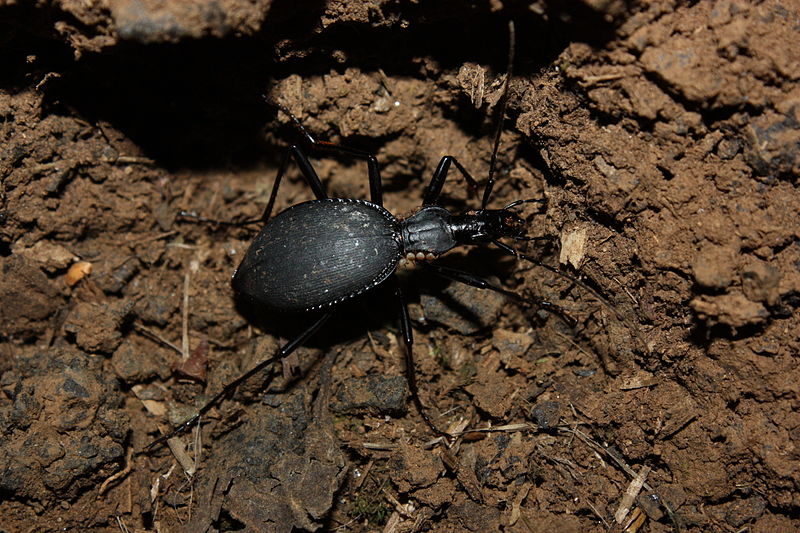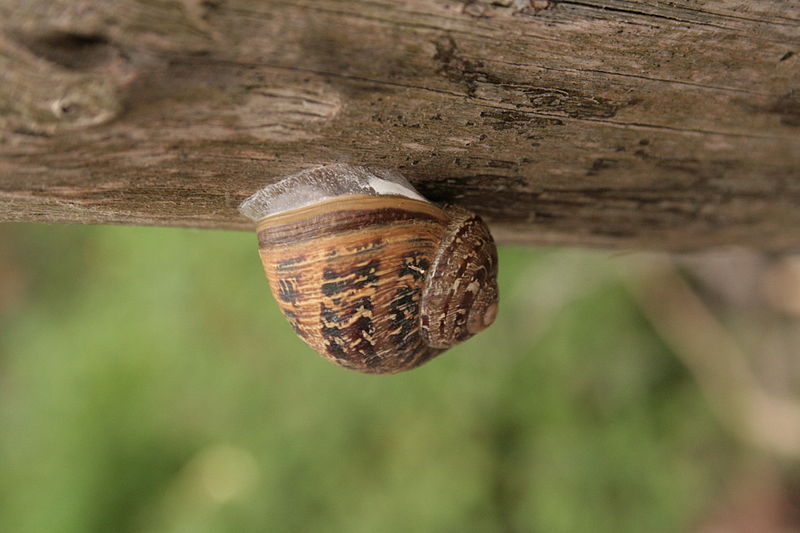Adaptations
Many of the adaptations developed by terrestrial gastropods such as Daedalochila subclausa address two major concerns of land snails: being eaten and drying out.
The shell of snail may be one of the more conspicuous lines of
defense against predation. Coloration and variation in texture help
snails blend in to their environment and avoid detection (Hotopp
2006). If a predator attacks, these mollusks have developed the
behavioral adaptation of quickly withdrawing in to their shells so
as not to leave soft tissue exposed (Hotopp
2006). Also, land snails have evolved a thicker shell and a more
complex aperture to prevent attackers from entering or breaking
shells (Hotopp
2006).
Some predators have specialized bodies for snail consumption. For example, as snails continue to develop thicker and more convoluted shells, arthropods of the genus Scaphinotus have evolved a narrower head and hook-like appendages to penetrate the apertures of its prey (Hotopp 2006, Encyclopedia 2011).
If these strategies are not enough to prevent land snails from being injured by attack, not all hope is lost. These gastropods have significant regenerative abilities (Hotopp 2006). A foot or tentacle can be replaced, and, as many shell collectors have observed, a shell can be patched easily (Hotopp 2006).
Mucus is an adaption that serves many uses. Snails can utilize it to smother or confuse their predators or to prevent drying out (Hotopp 2006). It also is a useful protection against many sharp surfaces a snail might be sliding against (Conrad 2011).
 Because
it is such a large concern, there are multiple methods that snails
have adopted to prevent dehydration. They can be found buried in
soil or under rocks, logs, and leaves, where there is more moisture
(Conrad 2011). Snails will tend to go
out at night or in damp weather because mucus, being mostly water,
can evaporate quickly (Hotopp
2006). If the environment is not suitable for staying hydrated, a snail
can go into estivation, in which the snail plugs its aperture with
mucus and the snails' metabolism and other body processes slow (Conrad
2011).
Terrestrial gastropods can stay in this state for very long periods
of time until water arrives again (Conrad
2011).
Because
it is such a large concern, there are multiple methods that snails
have adopted to prevent dehydration. They can be found buried in
soil or under rocks, logs, and leaves, where there is more moisture
(Conrad 2011). Snails will tend to go
out at night or in damp weather because mucus, being mostly water,
can evaporate quickly (Hotopp
2006). If the environment is not suitable for staying hydrated, a snail
can go into estivation, in which the snail plugs its aperture with
mucus and the snails' metabolism and other body processes slow (Conrad
2011).
Terrestrial gastropods can stay in this state for very long periods
of time until water arrives again (Conrad
2011).
To learn about the diet of Daedalochila subclausa, continue on to our Nutrition page.